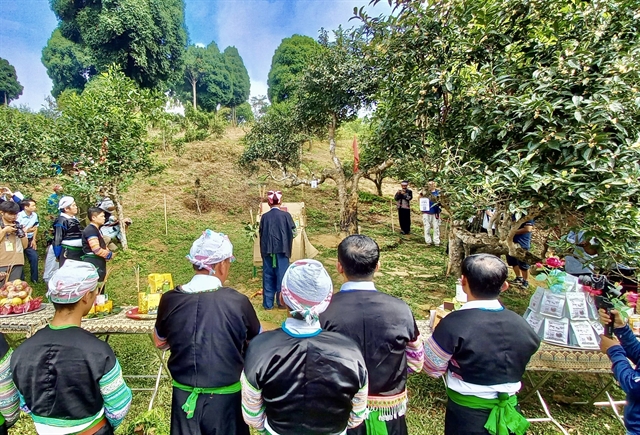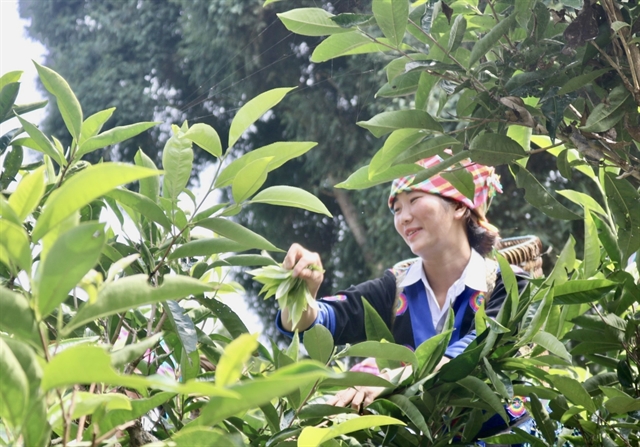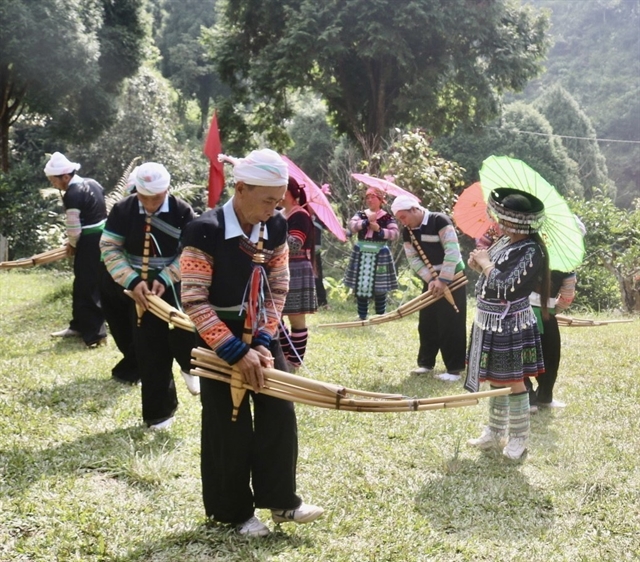
At the ceremony to honour ancient Shan Tuyết tea trees, locals offer their best foods and agricultural products. VNA/VNS Photo Tuấn Anh
A traditional festival to honour ancient Shan Tuyết tea trees has taken place in Văn Chấn District in the northern province of Yên Bái.
The annual festival is conducted following the rituals of the Mông ethnic group in Suối Giàng Commune. It commenced with a ceremonial procession of offerings that are the finest agricultural products of the local region such as sticky rice, wine, poultry, flowers, fruits, tea, incense, among others.

Mông men carry offerings at the Shan Tuyết tea tree festival. VNA/VNS Photo Tuấn Anh

The village elderly of Mông people in Suối Giàng Commune leads the ceremony. VNA/VNS Photo Tuấn Anh
By the root of the ancient tea tree in Pang Cáng Village, the ceremonial leader, also an elderly and respected member of the community with deep knowledge and understanding of Mông traditions and customs, represented the villagers in offering ritual sacrifices and expressing their aspirations and gratitude to the heavens and the earth for bestowing blessings upon them.

A Mông woman demonstrates tea picking at the festival. VNA/VNS Photo Tuấn Anh
The ceremony was followed by a series of activities during which visitors could join Mông people pick, process and taste Shan Tuyết tea.
Suối Giàng Commune has over 500 hectares of land covered with Shan Tuyết tea trees. In which, more than 300 hectares are tea trees that are older than 100 years.

Múa khèn - a type of dance that features a traditional musical instrument named khèn by the Mông people - is performed by Mông men at the Shan Tuyết Tea Tree Festival. VNA/VNS Photo Tuấn Anh
The tea trees yield about 620 tonnes of fresh leaves each year, ensuring stable livelihoods for ethnic locals in the commune.
The oldest tea tree is about 400 years old, known locally as “the first tea tree”. This oldest tea tree is also recognised as a Vietnam heritage tree by the Vietnam Association for Conservation of Nature and Environment.
Shan Tuyết fresh tea buds are normally coated with 'lanugo'. After being processed they are then covered with a milky layer of 'snow' with aromatic scents, leading it to be called “Shan Tuyết”, known as “Snow Shan” in English.
Each year, the Mông ethnic community in Suối Giàng holds a festival with rituals and offerings to honour and promote the values of ancient Shan Tuyết tea trees. VNS